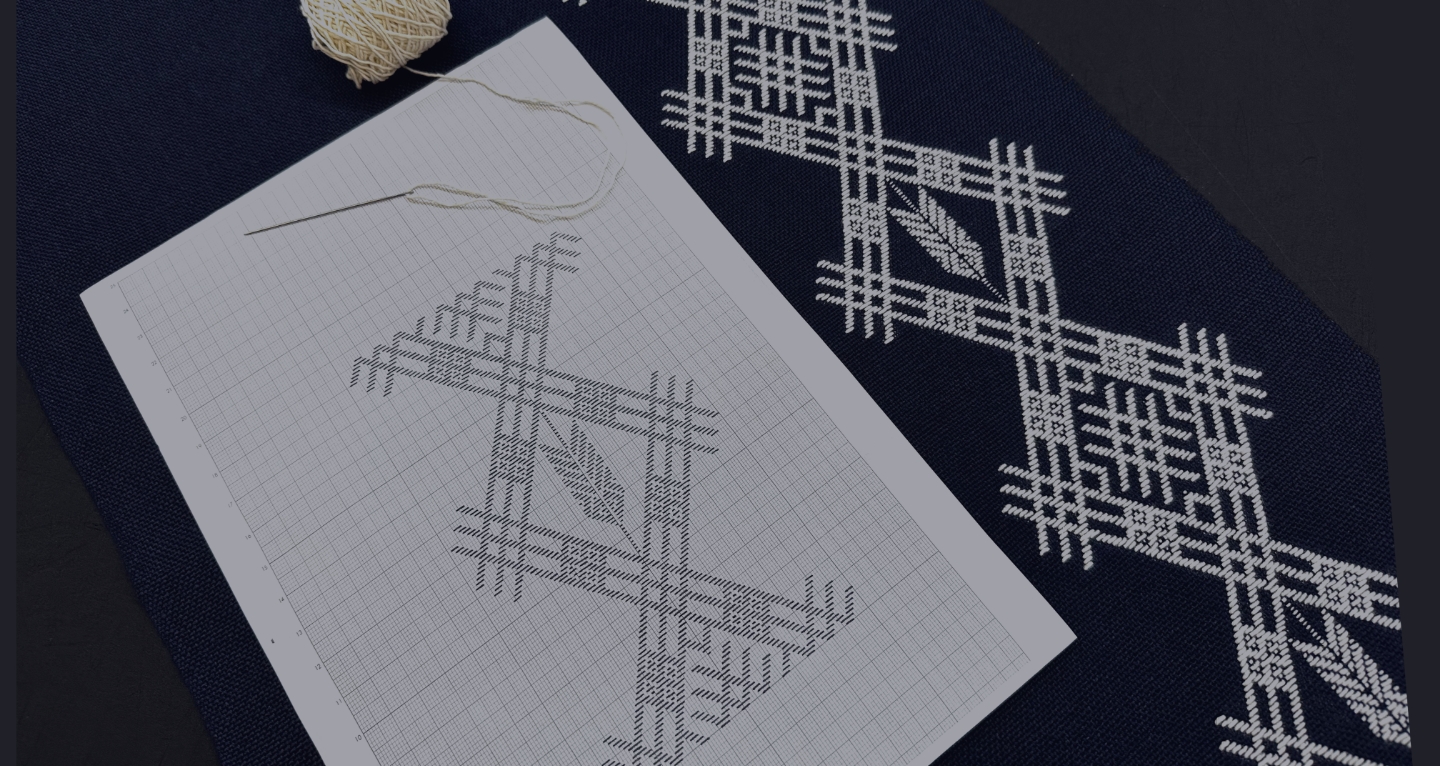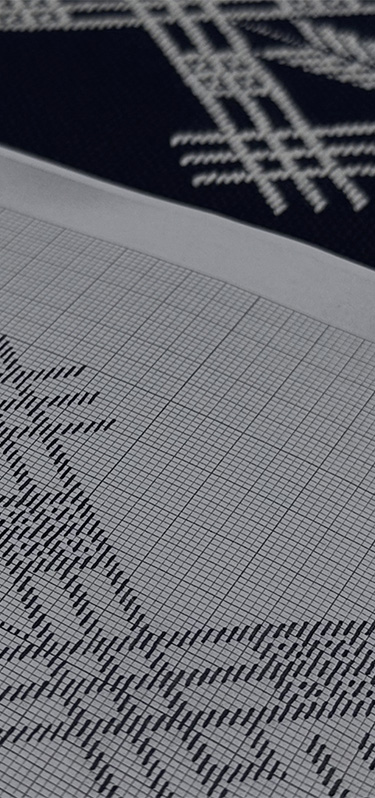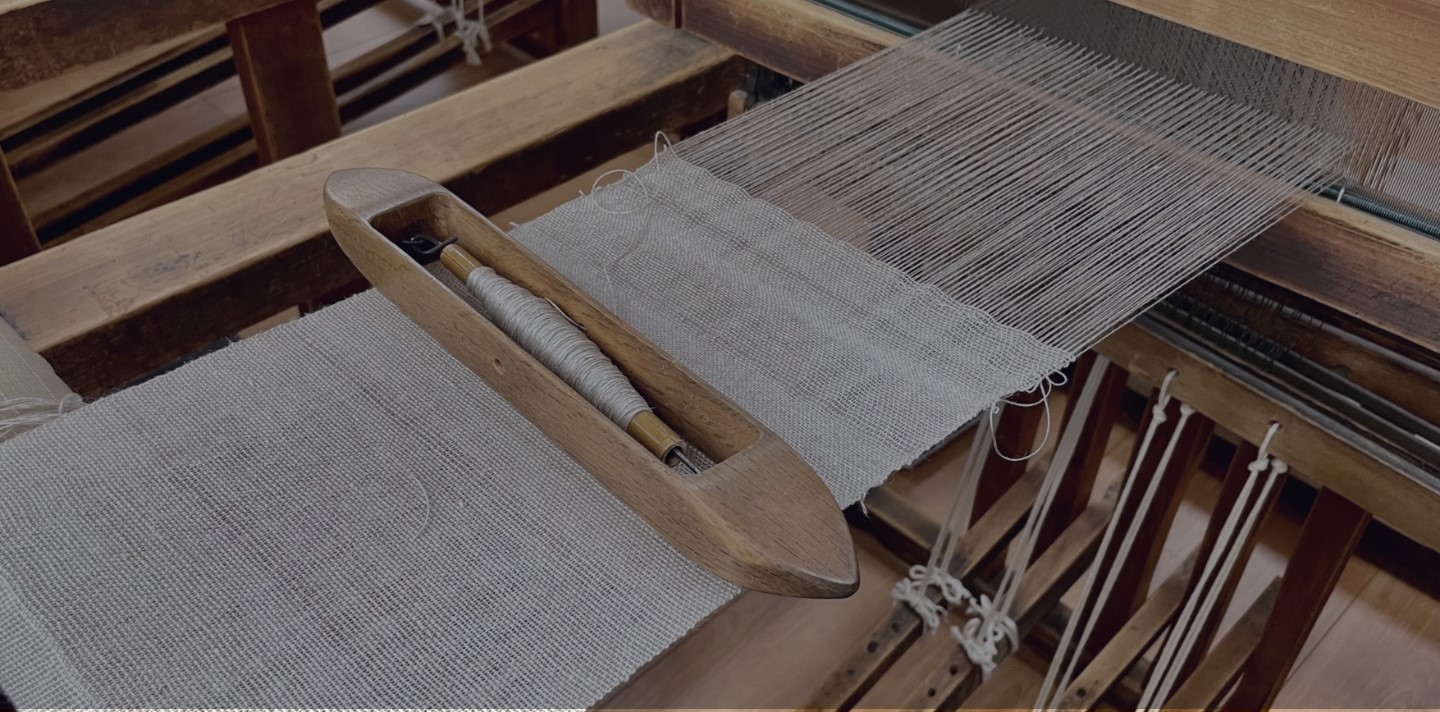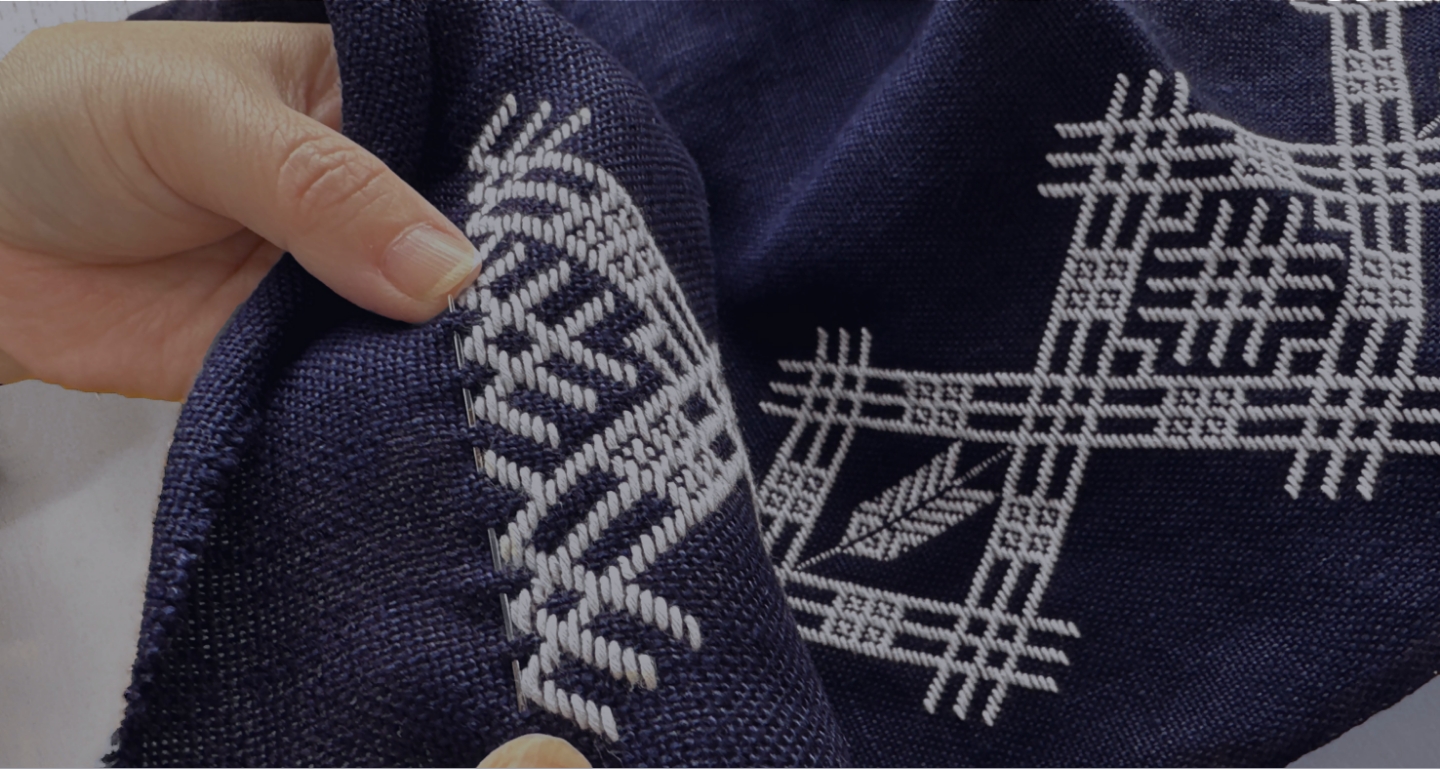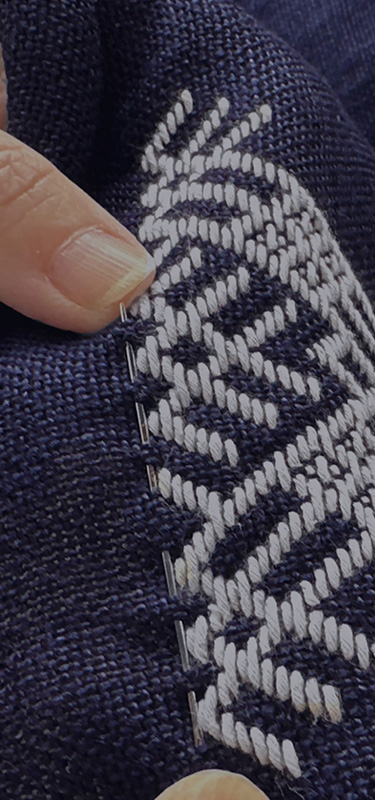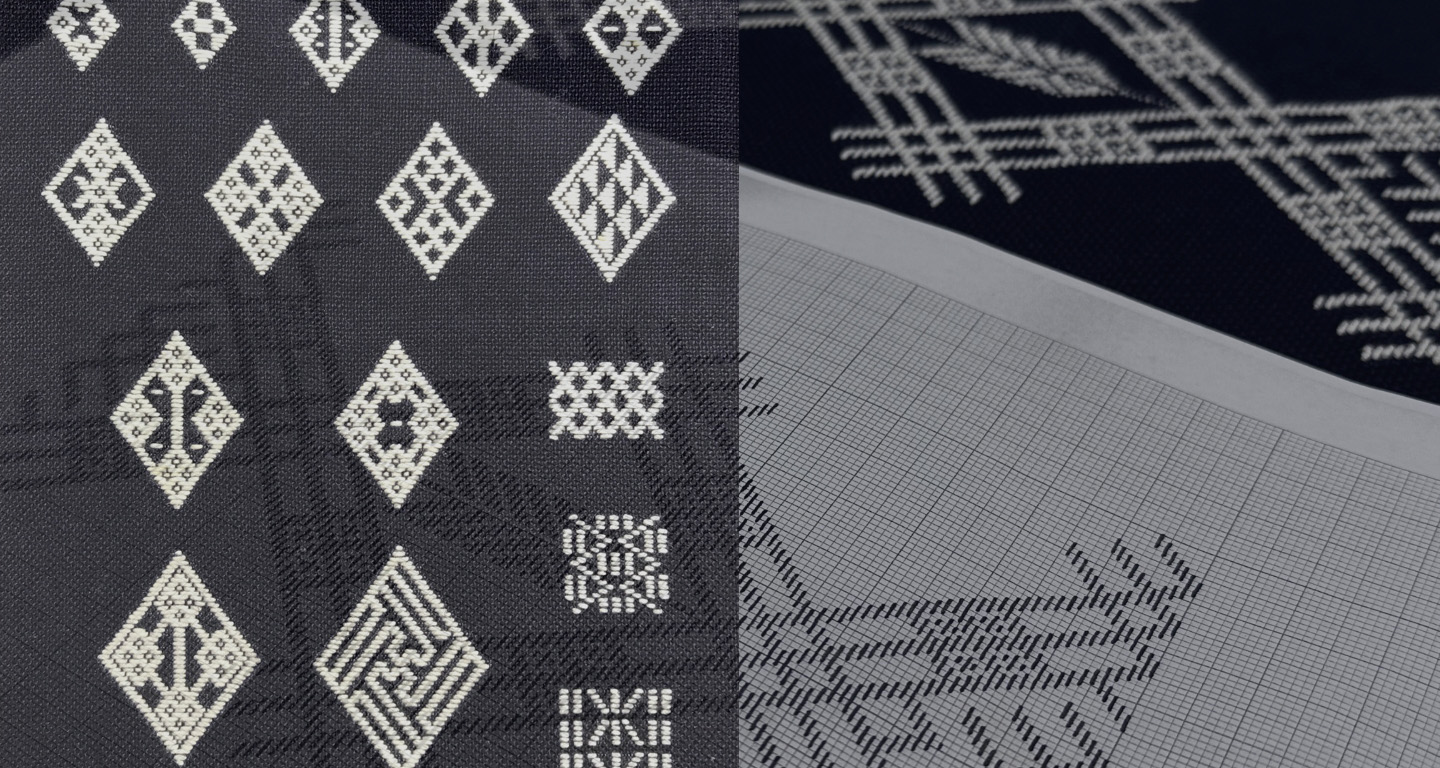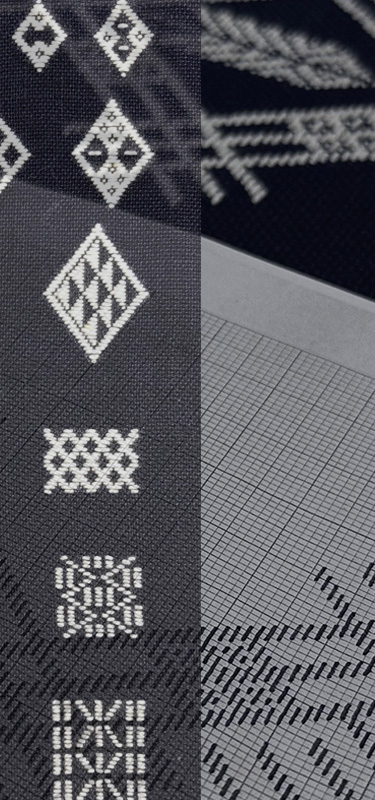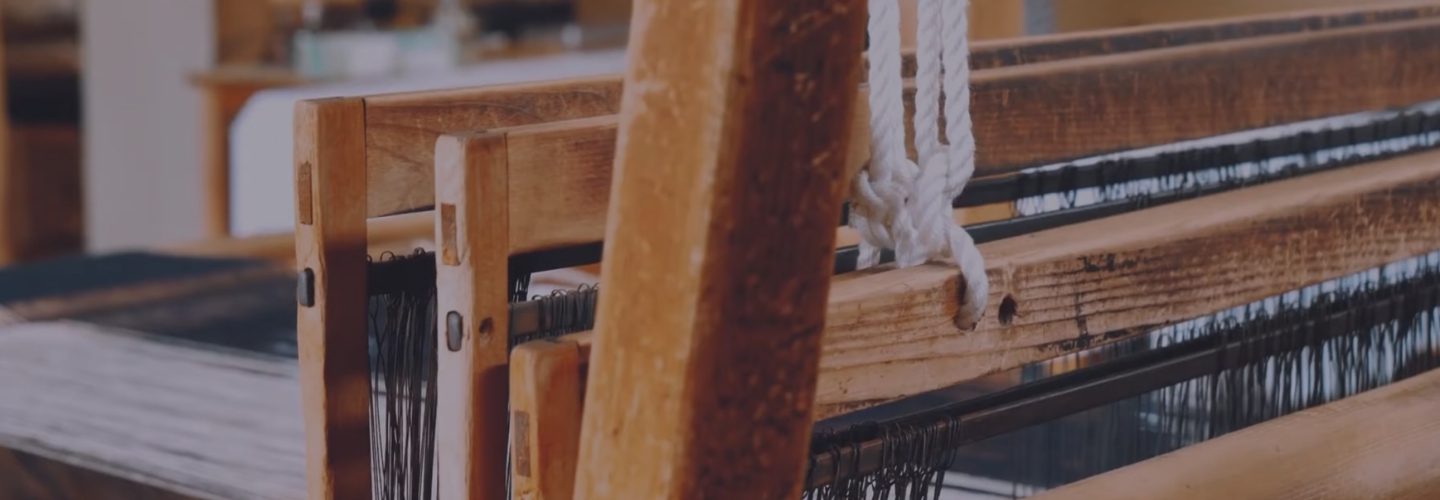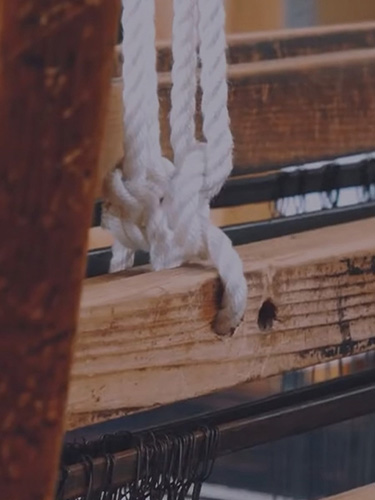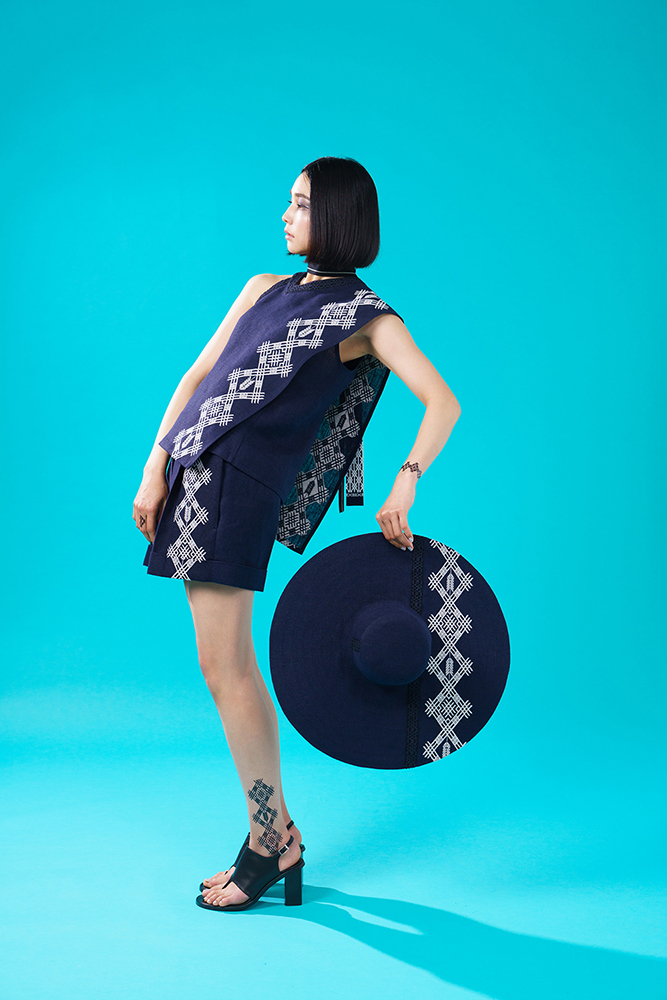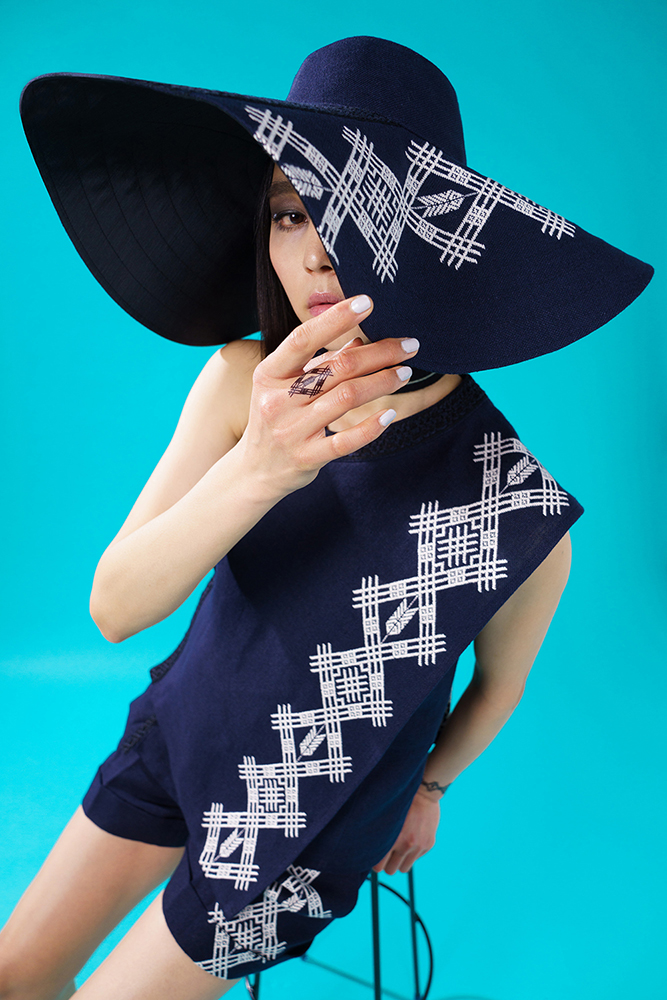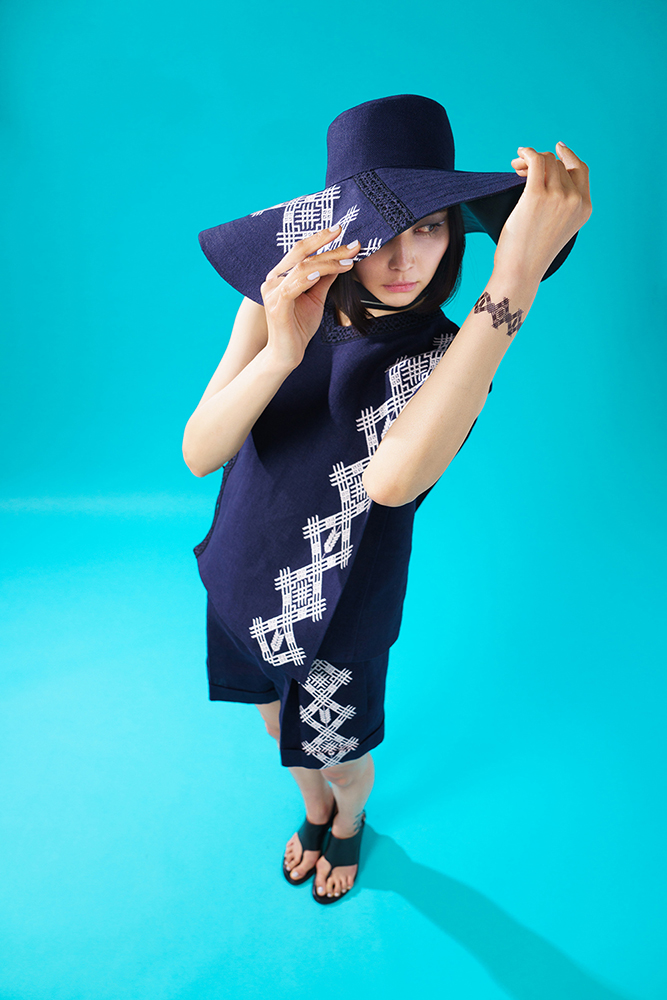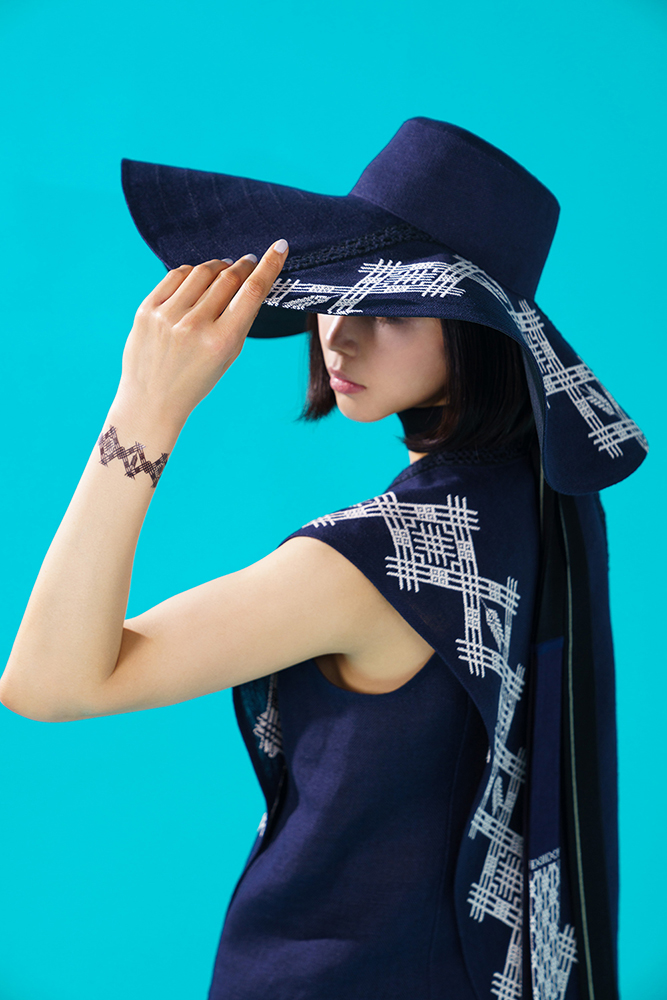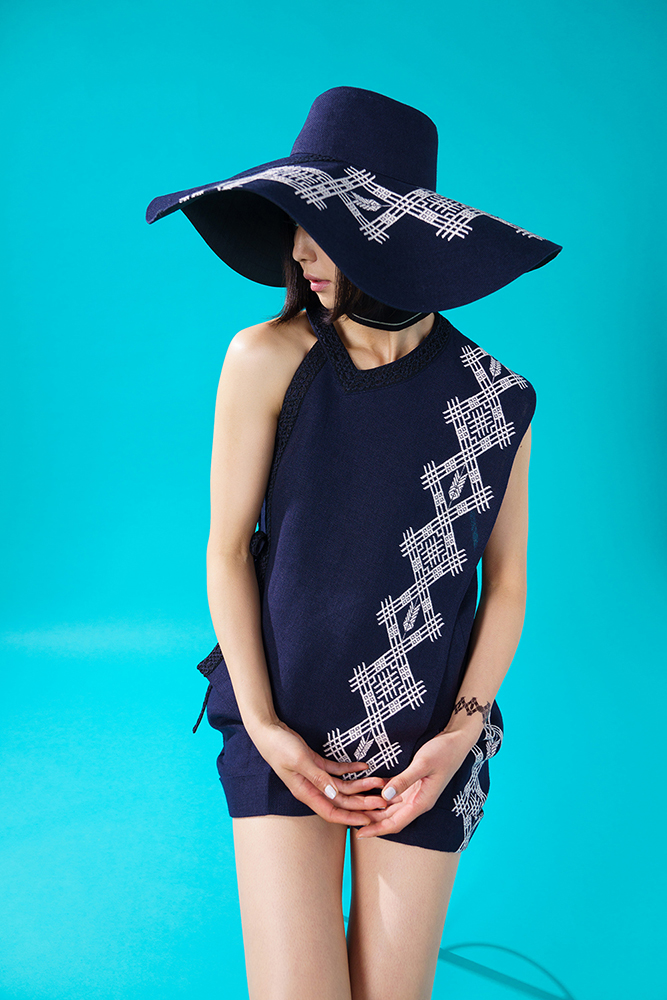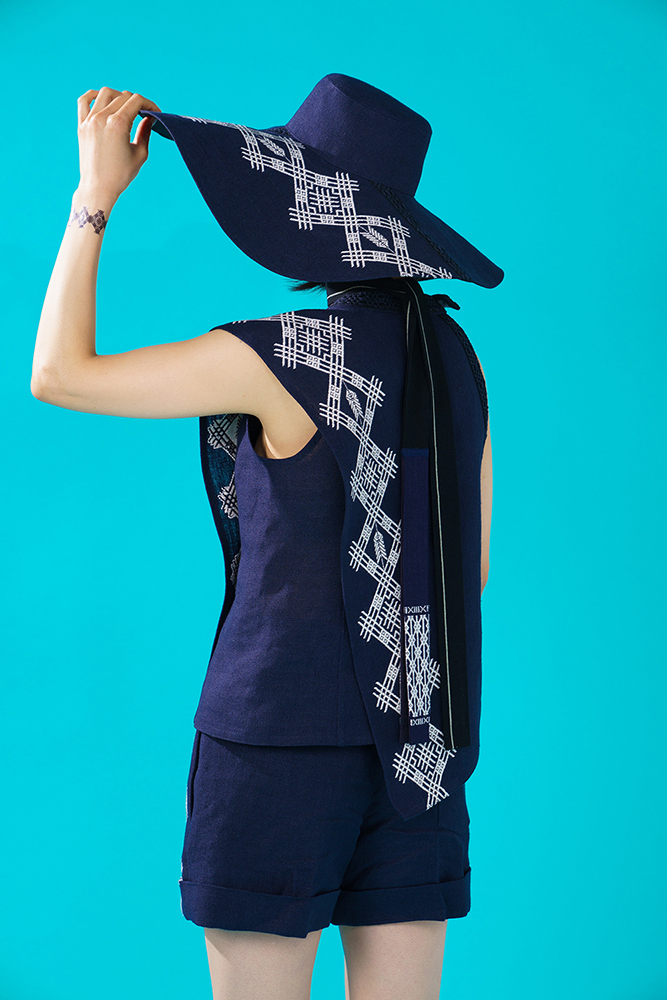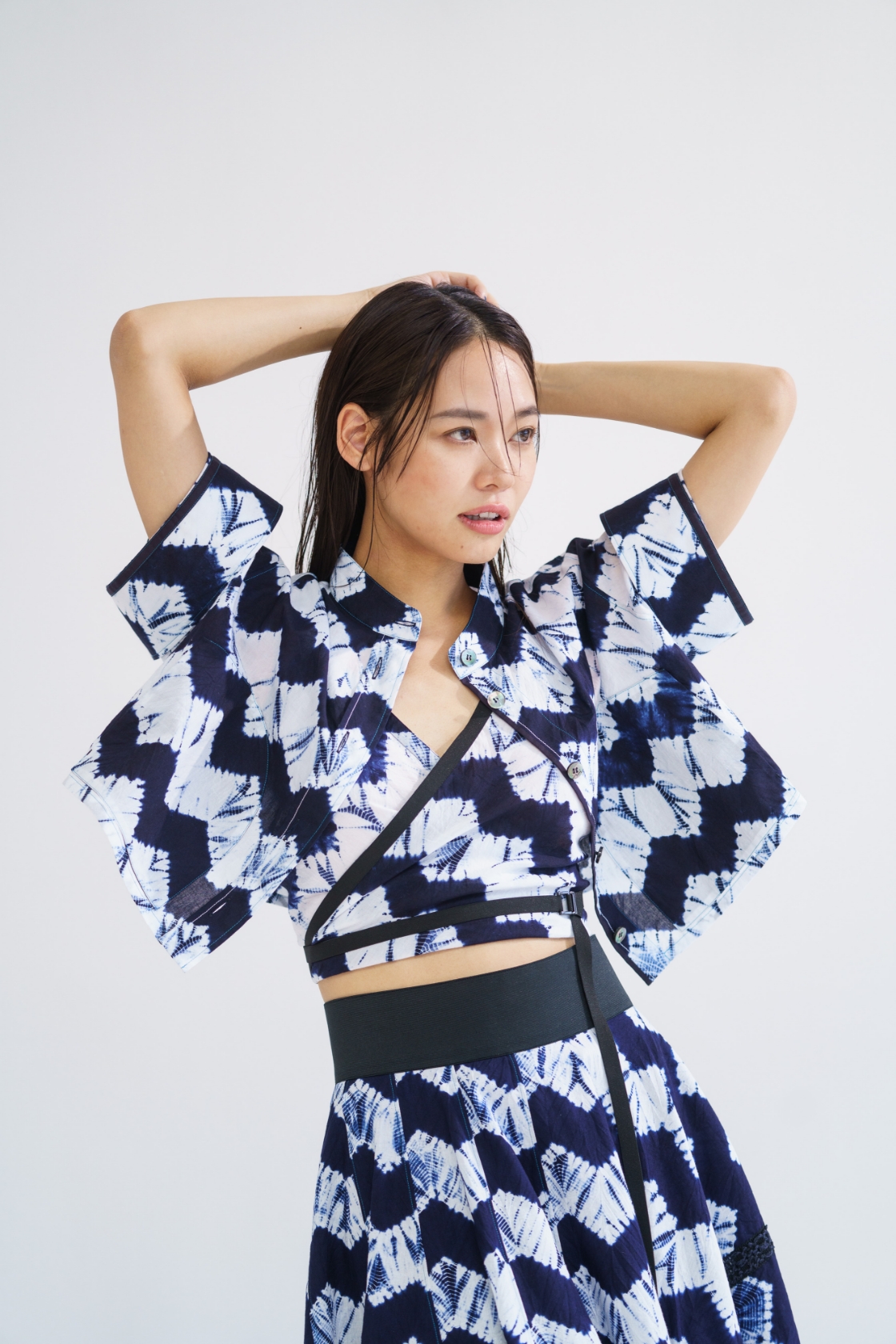KOGIN-SASHI
AOMORI PREF.
Traditional Techniques Born from the Wisdom of the Snow Country, Bringing Warmth to Fabric
Located in the northernmost part of Honshu, Tsugaru, with its cold climate, was unable to cultivate cotton.
Imported cotton products were considered expensive luxuries. Consequently, during the Edo period,
the local farmers were not permitted to wear costly cotton clothing. Instead, they wore multiple layers of indigo-dyed hemp kimonos to withstand the cold.
To make these coarse hemp fabrics more suitable for the harsh winter and to reinforce them,
they began to stitch them with cotton threads, eventually giving rise to "Tsugaru Kogin-zashi".
This stitching technique also served the purpose of mending worn-out fabric during farm work.
In this way, Kogin-zashi is an art form born from the ingenuity of women living in the harsh northern climate.

Base Fabric Weaving
During the late Edo and early Meiji periods in the harshly cold Tsugaru region, where cotton could not grow,
farmers cultivated and harvested hemp in their fields to weave into kimonos. It was during this era,
when indulgence in luxurious colored dyes or expensive cotton was forbidden, that the simple beauty of Kogin-zashi was born.
Stark white cotton threads stitched into indigo-dyed hemp fabric created unpretentious geometric patterns,
a manifestation of beauty born from oppression.
The base fabric itself is also carefully hand-woven in this region (including some partially machine-woven portions).
Stitching (Unique Embroidery)
To survive the extreme cold, it became necessary to stitch together layers of breathable hemp fabric and reinforce fabric worn from farm work.
It was a wisdom born of necessity, but in it the women found joy and pleasure in creating beauty.
Kogin-zashi, counting odd numbers like one, three, five, seven, etc.
against the vertical weaving lines, flourished around Hirosaki.
MODOKO(Design Pattern)
Originally sewn for warmth and reinforcement, Kogin-zashi gradually evolved as artisans competed in design, leading to the creation of diamond patterns.
The basic units of these patterns are called ”Modoko”' with around thirty types commonly known.
By freely combining these Modoko, Kogin-zashi allows for countless expressions, akin to musical performances.

